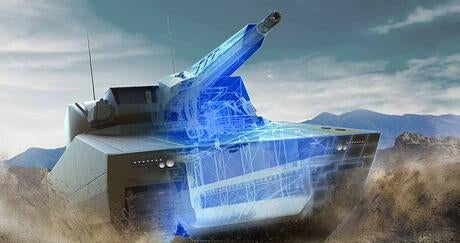L3Harris Technologies is at the forefront of developing mission systems flexibility for the Team Lynx XM30, the U.S. Army's next-generation combat vehicle program, revolutionizing protection, mobility, future growth, and lethality. As a key player in Team Lynx, we're delivering mission systems using digital engineering and Modular Open Systems Architecture (MOSA) for unmatched adaptability and cost efficiency.
Team Lynx, is one of two defense contractor teams down-selected by the Army to develop the XM30 Combat Vehicle.
MOSA's open design allows for swift integration of evolving technologies, avoiding vendor lock and costly redesigns. This ensures the XM30 remains technologically advanced and cost-effective throughout its service life—a significant advantage for the Warfighter.
“Our team is at the forefront of integrating the Ground Combat Systems Common Infrastructure Architecture (GCIA), utilizing it as a key enabler for the MOSA implementation,” says Jeff VanDorp, Chief Software Engineer, L3Harris Technologies. “This architecture serves as the backbone for our systems, ensuring interoperability and flexibility. By adopting this standardized framework, we are able to streamline the integration of advanced technologies and capabilities, while also facilitating easier upgrades and maintenance. This approach not only enhances the operational effectiveness of the Lynx XM30 but also ensures that it remains adaptable to the evolving needs of modern warfare.”
Jeff VanDorp, with 30 years' experience in open architecture systems for ground and avionic platforms, has shaped key industry standards. His expertise is crucial to L3Harris and Team Lynx's success."
L3Harris is equipping the Lynx XM30 with systems that enhance sensing, processing, sharing, and automation. These advancements ensure overmatch by increasing crew lethality and preserving the vehicle's battlefield superiority against rapidly evolving threats.
The impact of the L3Harris MOSA-driven enhancements is multifaceted. First, it allows for seamless integration of next-generation sensors and weapons systems, which are crucial for detecting and engaging threats at greater distances and with higher precision. Second, the advanced data processing and sharing infrastructure ensures that critical information is relayed between crew members and other assets in real-time, enabling swift decision-making and coordinated actions. Lastly, the increased automation reduces cognitive load on the two-Soldier crew, allowing them to focus on operations while automated systems handle routine tasks.
These improvements translate into a decisive combat edge, where the Lynx XM30 can outmaneuver, outperform, and outlast adversary forces. The vehicle's battlefield overmatch is preserved not just for today's conflicts but is also poised to evolve with the ever-changing landscape of warfare, driven through the flexible and upgradable nature of the MOSA framework.
Learn more about L3Harris’ role in developing the XM30.

